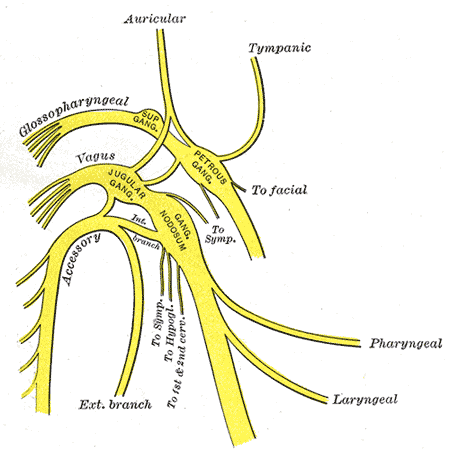This webpage is dedicated to corrections to Physical Medicine and Rehabilitation Board Review 2nd edition (2010) by Cuccurullo. These corrections range from simple grammatical errors, to incorrect concepts and information. I felt that due to the widespread use of this book by residents to prepare for boards that corrections may be helpful. Please feel free to post ones that are missing from this page, or add further clarification to the ones posted.
Special thanks to Dr. Keith Moench for help with this project!
Page 7: Under the Lacunar heading: “Occlusion occurs in small arteries 50-200mm in diameter.” 200 millimeters is 20 cm or about 7.9 inches. The aorta is the largest vessel at ~3 cm (more specifics here). I am not sure what the correction should be. I was thinking microns makes the most sense. If anyone has the reference please let me know.
Page 12: There is a book icon under the graphic towards the top third of the page “NOTE: CN1 and CN2 nuclei are located in forebrain. The spinal division of CN11 arises from ventral horns of CN1-CN6.” This should read C1-C6.
Picture from Gray’s anatomy
Page 71: book icon: “The majority of posttraumatic seizures are simple partial.” This may be true, though Braddom 3rd edition (2007) states that the majority are complex partial. If anyone knows a definite answer with a reference for this please let me know.
Page 151: The Shoulder Girdle Complex: The Glenohumeral Joint at the top of the page. A heading under this is “Main components of the glenohumeral joint.” Underneath this heading “Dynamic shoulder stabilizers” are listed twice.The second one should be changed to “Static shoulder stabilizers”. Which you can read more about here.
Page 169: Book icon at the top: “Fusion position: 50 degrees abduction, 30 degrees forward flexion, 50 degrees internal rotation.” I wasn’t able to find the reference for this. Most of what I read states the position should be 20 abduction, 20 forward flexion, and 40 internal rotation with some slight variations based on patient size/needs etc.
1. J Am Acad Orthop Surg. 2006 Mar;14(3):145-53. Arthrodesis of the shoulder. Safran O, Iannotti JP.
2.Clin Orthop Relat Res. 1987 Oct;(223):65-76.A functional analysis of shoulder fusions. Hawkins RJ, Neer CS 2nd.
Page 173: Scapular winging near the middle of the page. “(Also see Electrodiagnostic Medicine/Neuromuscular Physiology Table 5-31, page 413)” This should be page 416.
Page 179: At the bottom of the page there is a bookmark icon stating that the ideal fusion position for unilateral elbow fusion is 90 degrees. I was not able to find a clear reference for this. I did find two studies, one which showed that 110 degrees was optimal compared to 90, and that 90 was optimal when compared to 45 degrees.
1. Tang. C. et al. The effect of simulated elbow arthrodesis on the ability to perform activities of daily living. J Hand Surg Am. 2001 Nov;26(6):1146-50
Page 187: Cubital Tunnel Syndrome (See Also EMG/Nerve and Muscle Chapter). There is no redirect given. Adding “See page 406.” Would be helpful.
Page 351: Table 5-4 Seddon Classification Table: Under Axonotmesis the 4th row of information shows wave forms distal or proximal to the site of injury. I believe the words distal and proximal need to switch for the wave forms to be accurate.
Page 401: At the bottom of the page there is discussion about the LOAF muscles which are innervated by the median nerve…(Lumbricals, Opponens pollicis, Abductor pollicis brevis, and 4 heads of the FDS) This should be changed to Flexor pollicis brevis.
Page 650: At the bottom of the large table there is “Key: Refer to lung volume definitions for abbreviations on page 643″ This should be page 645.
Page 652: Under the ALS heading “…pulmonary function tests, especially functional vital capacity…” Should be Forced vital capacity.
Page 670: Towards the bottom of the page it discusses medications following a heart attack. “Beta blockers reduce mortality and reinforce after MI…” I am not sure what “reinforce” is pertaining to. B-blockers do help slow/prevent left ventricular remodeling which is a weaking of the LV. I assume this is what that statement means, though if someone has other thoughts please let me know.
Page 677: Under the heading of Exercise Nuclear Testing. “Thallium or sestainibi…” should be sestamibi
Page 688: This page gives statistics for survival rate following a heart transplant. At the top of the page it list the 1 year and 5 year rates as 85% and 75% respectively. At the middle of the page it lists the 5 year and 10 year rates as 85% and 75% respectively. This gives two different percentages for the 5 year rate. Although the rates may have been different at the time of publication, current rates are as follows:
1-year survival is 88% 5-year survival is 75%, and the 10-year survival is 56%.
You can read more about this here.
Page 731: At the top of the page the paragraph is discussing the reduction of a Nursemaid’s elbow. “Reduction usually is achieved by supination and extension of the forearm” I am not certain what forearm extension is. Maybe this is wrist extension? Regardless, having personally reduced this on my daughter I can tell you that you hold the elbow over the radial head. Supinate the forearm and and flex the elbow.
Page 731: There is a book icon stating that little leaguer’s elbow is Medial epicondylitis. Little leaguer’s elbow is more accurately classified as Medial Apophysitis. Medial epidcondylitis is typically referred to as golfer’s elbow.
Page 740: At the bottom of the page “Hydroxychloroquine is the most commonly antimarlarial drug…” Should be most common.
Page 799: Halfway down the page “Course and prognosis:….extremely variable, even with a family.” Should be within a family.
That is what I have so far. Please feel free to post any other corrections that you find. Also if there is anything that needs further clarification of what I posted I would be happy to hear that as well.
